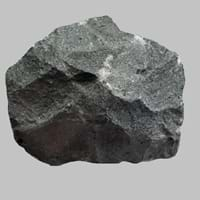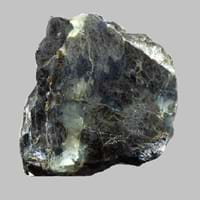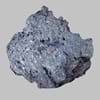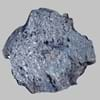Definition
Latite is an igneous, volcanic rock, with aphanitic-aphyric to aphyric-porphyritic texture
Pyroxenite is a dark, greenish, granular intrusive igneous rock consisting mainly of pyroxenes and olivine
Discoverer
Unknown
Unknown
Etymology
From the Latin word latium
From pyro- fire + Greek xenos stranger as the mineral group was new to igneous rocks
Class
Igneous Rocks
Igneous Rocks
Sub-Class
Durable Rock, Medium Hardness Rock
Durable Rock, Hard Rock
Other Categories
Fine Grained Rock, Opaque Rock
Coarse Grained Rock, Opaque Rock
Texture
Aphanitic to Porphyritic
Clastic, Granular, Phaneritic, Porphyritic
Color
Black, Brown, Colourless, Green, Grey, Pink, White
Black to Grey, Bluish - Grey, Dark Greenish - Grey, Green, Light Greenish Grey
Durability
Durable
Durable
Scratch Resistant
Yes
Yes
Appearance
Rough
Layered, Banded, Veined and Shiny
Interior Uses
Decorative Aggregates, Entryways, Interior Decoration
Countertops, Decorative Aggregates, Interior Decoration, Kitchens
Exterior Uses
As Building Stone, As Facing Stone, Garden Decoration, Office Buildings
As Building Stone, As Facing Stone
Other Architectural Uses
Curbing
Curbing
Construction Industry
As a Flux in the Production of Steel and Pig Iron, As a Sintering Agent in Steel Industry to process Iron Ore, As Dimension Stone, Cement Manufacture, for Road Aggregate, Making natural cement, Manufacture of Magnesium and Dolomite Refractories
As Dimension Stone, Building houses or walls, Cement Manufacture, Construction Aggregate, for Road Aggregate
Medical Industry
Not Yet Used
Not Yet Used
Antiquity Uses
Artifacts, Monuments, Sculpture
Artifacts
Commercial Uses
An Oil and Gas Reservoir, As a Feed Additive for Livestock, Metallurgical Flux, Soil Conditioner, Source of Magnesia (MgO)
Cemetery Markers, Commemorative Tablets, Laboratory bench tops, Jewelry, Sea Defence, Tombstones
Types
Rhomb porphyries
Clinopyroxenites, Orthopyroxenites and Websterites
Features
Host Rock for Lead
Generally rough to touch, Host rock for Diamond, Is one of the oldest rock
Archaeological Significance
Monuments
Used
Not Yet Used
Famous Monuments
Data Not Available
Not Applicable
Sculpture
Used
Not Yet Used
Famous Sculptures
Data Not Available
Not Applicable
Pictographs
Used
Not Used
Petroglyphs
Used
Not Used
Figurines
Used
Not Yet Used
Formation
Latite is a fine-grained, hard rock which is a type of metasomatite, essentially altered basalt. It forms with or without crystallization, either below the surface as intrusive rocks or on the surface as extrusive rocks.
Pyroxenites are ultramafic igneous rocks which are made up of minerals of the pyroxene group, such as augite and diopside, hypersthene, bronzite or enstatite.
Mineral Content
Alkali feldspar, Biotite, Plagioclase, Pyroxene
Amphibole, Augite, Bronzite, Chromite, Diopside, Enstatite, Garnet, Hornblende, Hypersthene, Magnetite, Pyroxene
Compound Content
CaO, Cl, MgO
Aluminium Oxide, CaO, Chromium(III) Oxide, Iron(III) Oxide, Potassium Oxide, MgO, Sodium Oxide, Silicon Dioxide, Sulfur Trioxide
Types of Metamorphism
Burial Metamorphism, Cataclastic Metamorphism
Burial Metamorphism, Impact Metamorphism, Regional Metamorphism
Types of Weathering
Biological Weathering, Chemical Weathering, Mechanical Weathering
Biological Weathering, Chemical Weathering, Mechanical Weathering
Types of Erosion
Chemical Erosion, Water Erosion, Wind Erosion
Chemical Erosion, Coastal Erosion, Water Erosion
Grain Size
Fine Grained
Coarse Grained
Fracture
Conchoidal
Uneven
Streak
White
White, Greenish White or Grey
Porosity
Very Less Porous
Less Porous
Luster
Subvitreous to Dull
Dull to Vitreous to Submetallic
Compressive Strength
Not Available
Cleavage
Perfect
Irregular
Toughness
2.7
Not Available
Specific Gravity
2.86
3.2-3.5
Transparency
Translucent
Opaque
Density
2.8-2.9 g/cm3
3.1-3.6 g/cm3
Specific Heat Capacity
Not Available
Resistance
Heat Resistant, Pressure Resistant
Impact Resistant, Pressure Resistant, Wear Resistant
Deposits in Eastern Continents
Asia
Not Yet Found
India, Russia
Africa
Not Yet Found
South Africa
Europe
Bulgaria
Germany, Greece, Italy, Scotland, Turkey
Others
Not Yet Found
Greenland
Deposits in Western Continents
North America
USA
Canada, USA
South America
Not Yet Found
Brazil, Colombia, Venezuela
Deposits in Oceania Continent
Australia
Not Yet Found
New Zealand, Queensland
Latite vs Pyroxenite Characteristics
Though some rocks look identical, they have certain characteristics which distinguish them from others. Characteristics of rocks include texture, appearance, color, fracture, streak, hardness etc. Latite vs Pyroxenite characteristics assist us to distinguish and recognize rocks. Also you can check about Properties of Latite and Properties of Pyroxenite. Learn more about Latite vs Pyroxenite in the next section. The interior uses of Latite include Decorative aggregates, Entryways and Interior decoration whereas the interior uses of Pyroxenite include Countertops, Decorative aggregates, Interior decoration and Kitchens. Due to some exceptional properties of Latite and Pyroxenite, they have various applications in construction industry. The uses of Latite in construction industry include As a flux in the production of steel and pig iron, As a sintering agent in steel industry to process iron ore, As dimension stone, Cement manufacture, For road aggregate, Making natural cement, Manufacture of magnesium and dolomite refractories and that of Pyroxenite include As dimension stone, Building houses or walls, Cement manufacture, Construction aggregate, For road aggregate.
More about Latite and Pyroxenite
Here you can know more about Latite and Pyroxenite. The life cycle of a rock consists of formation of rock, composition of rock and transformation of rock. The composition of Latite and Pyroxenite consists of mineral content and compound content. The mineral content of Latite includes Alkali feldspar, Biotite, Plagioclase, Pyroxene and mineral content of Pyroxenite includes Amphibole, Augite, Bronzite, Chromite, Diopside, Enstatite, Garnet, Hornblende, Hypersthene, Magnetite, Pyroxene. You can also check out the list of all Igneous Rocks. When we have to compare Latite vs Pyroxenite, the texture, color and appearance plays an important role in determining the type of rock. Latite is available in black, brown, colourless, green, grey, pink, white colors whereas, Pyroxenite is available in black to grey, bluish - grey, dark greenish - grey, green, light greenish grey colors. Appearance of Latite is Rough and that of Pyroxenite is Layered, Banded, Veined and Shiny. Properties of rock is another aspect for Latite vs Pyroxenite. The hardness of Latite is 5-5.5 and that of Pyroxenite is 7. The types of Latite are Rhomb porphyries whereas types of Pyroxenite are Clinopyroxenites, Orthopyroxenites and Websterites. Streak of rock is the color of powder produced when it is dragged across an unweathered surface. The streak of Latite is white while that of Pyroxenite is white, greenish white or grey. The specific heat capacity of Latite is 0.92 kJ/Kg K and that of Pyroxenite is Not Available. Depending on the properties like hardness, toughness, specific heat capacity, porosity etc., rocks are resistant to heat, wear, impact, etc.Latite is heat resistant, pressure resistant whereas Pyroxenite is impact resistant, pressure resistant, wear resistant.





